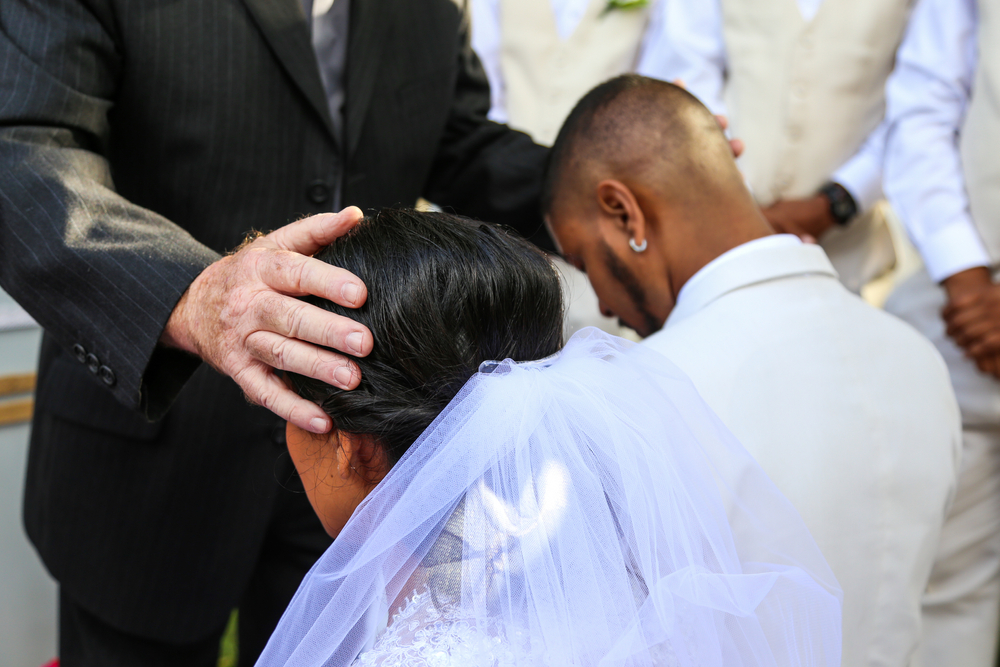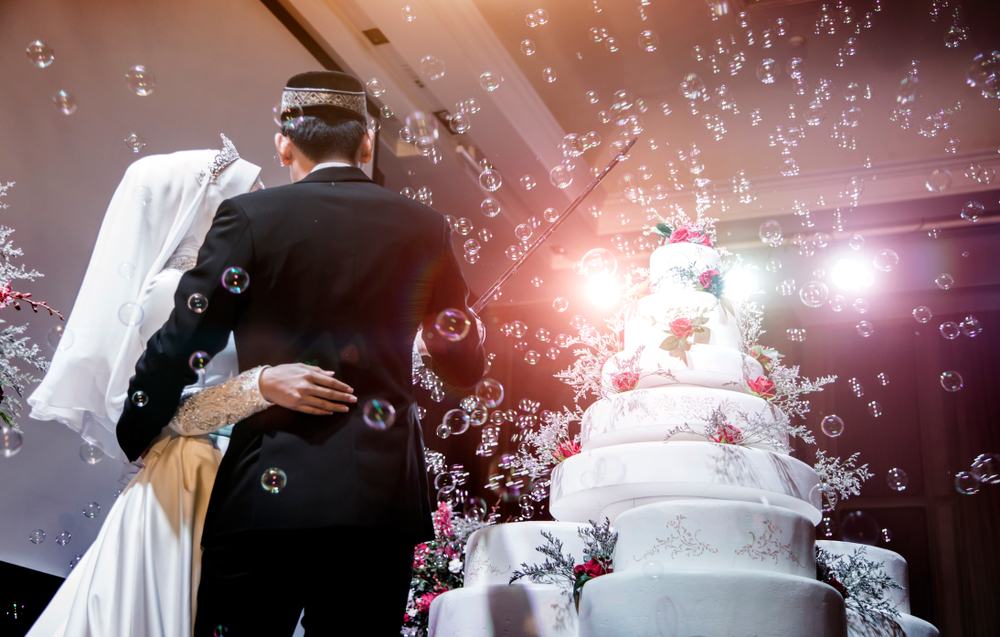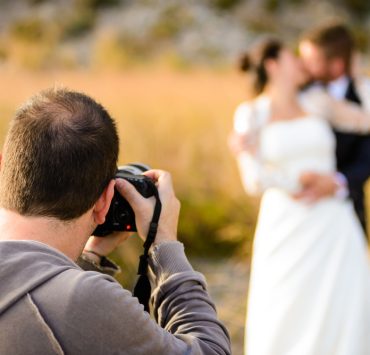Two people from different faiths coming together to get married is a beautiful thing—a testament to the power of love. But with distinct belief systems and traditions, a mixed religion wedding presents unique challenges, particularly, on how to blend two religions into one celebration.
Blending two religions in one celebration means bringing together different practices, art, and languages. How can a couple navigate this dizzying array of details and still arrive at a wedding that represents their relationship? While there’s no universal formula for planning an interfaith wedding, there are a few ways to go about it when planning your interfaith ceremony.
Here’s our guide on how to plan a mixed religion wedding in the Philippines:
First, What is an Interfaith Marriage?
It is widely known that some religions encourage their believers to marry someone from their faith, which raises a confusion: are interfaith marriages possible? The answer is yes!
An interfaith marriage is the union of two individuals who come from different religious backgrounds. In this type of union, both individuals keep their faith even as they tie the knot.

Can You Get Married in Two Different Religions?
Marriages are as much a legal affair as they are a religious affair in the Philippines. Religious officiants are licensed by the state to solemnize unions for church weddings.
Couples who want a quick and affordable option may prefer planning a civil wedding in the Philippines, which only involves the state. In a civil wedding, couples may get married regardless of their faith.
But if you’re both religious and want your faith to be integral to the celebration, you can hold an interfaith wedding ceremony where both religions are combined. In such a ceremony, the wedding traditions from each religion are practiced in one vibrant event celebrating the couple’s relationship.
If you and your partner are interested in an interfaith celebration, you may already have a few considerations in mind. Let’s go through some tips to help you navigate planning an interfaith wedding.
How to Plan an Interfaith Wedding Ceremony in the Philippines
Planning an interfaith wedding tends to be twice as complex as a traditional single-religion church wedding. You need to consider the distinct tradition of each religion and find a way to bring them together harmoniously.
Here are our tips to help you plan a successful mixed religion wedding:

Expect Requirements from the Churches and the Government
Since you’re getting married in two different religions, you need to submit the requirements of both churches, plus that of the Philippine government.
Regardless of the type of wedding you will hold, you need to register with the Local Civil Registrar, which will ask you for the same requirements for a civil wedding:
- 2 VALID I.D.s each
- 1×1 I.D. Picture
- PSA Birth Certificate
- Certificate of No Marriage (CENOMAR)
- Marriage License Application Form
- Community Tax Certificate
- Barangay Certificate
- Certificate of Attendance in Pre-Marriage Counseling
Churches may require additional requirements, such as a clearance for the celebration of mixed wedding.
If one of you is a Catholic, a church wedding in the Philippines will require a Certificate of Freedom to Marry, which you can get from your minister or pastor. An alternative is an Affidavit of Free Status to Marry signed by someone who has known you personally for more than 5 years. You will also need a Permission for the Celebration of Mixed Marriage from your local Archdiocese Office.
If you are a foreigner or a Filipino marrying a foreigner, look into the additional wedding requirements for foreigners in the Philippines.

Handpick the Most Important Traditions
The key to a successful interfaith ceremony is maintaining a balance between the two religions. Traditions and practices from both religions should be equally present and visible.
But, at the same time, you cannot incorporate all the traditions in one day—that would be a really long wedding (unless, of course, you’re holding a multi-day Hindu wedding).
Sit down with your significant other to discuss which traditions are most important to you—the elements that you feel are indispensable in a wedding ceremony. These components can serve as the foundation of your wedding ceremony.
From there, you can start removing the practices that are not as important. Then, you can piece together your interfaith wedding ceremony outline, which you can finalize with guidance from your officiants.
Find an Officiant or Officiants
While most weddings only have one officiant, many interfaith couples opt for two officiants. This way, both faiths are represented.
Be thorough in choosing your officiants. If possible, look for someone who has experience presiding over interfaith weddings, so you can guarantee that they can make your wedding a positive experience for everyone.
If you want your wedding to be truly seamless, ask the officiants to coordinate ahead of time so their sermons flow harmoniously. Discuss with them the outline you have come up with or involve them in structuring the program.

Incorporate Elements of Both Faiths Throughout the Wedding
Faith is not confined to the scriptures. Many religions have a rich culture that reflects their clothes and décor. Incorporating these in your décor would make it more charming and personal to you and your partner.
More importantly, family members and friends will surely appreciate the attention to detail. For example, a Christian-Hindu wedding may feature a Mandap where the couple can sit facing the guests, with a cross in the background.
Incorporate Your Faiths into Your Vows
Another way to incorporate your faith into the wedding is through your vows. Make a conscious effort to incorporate relevant elements from your significant other into your vow to show that you respect each other’s faith.
Make the Program Educational
Unless you’re planning to elope (in which case, you should check out our guide on how to elope in the Philippines, you should keep your guests engaged throughout the wedding. If they’re not familiar with the traditions conducted at different parts of the wedding, they may not participate.
One way to engage with them is by educating them about the wedding ceremony.
Take advantage of the ceremony program to educate your guests about the religious practices they will witness at your wedding. In the outline of your interfaith wedding, provide a brief background explanation of the origin of the traditions and what they represent.
Complement these with verbal explanations from the officiants. This way, guests will be able to appreciate all aspects of your mixed religion wedding and enjoy.

Your Interfaith Wedding Is About You
A mixed religion wedding is, by no means, widely known. Chances are, your wedding will raise a few eyebrows. However, a wedding is a celebration of the couple’s union, which is one that transcends religions and cultures.
We hope that this article helps you plan a wedding that not only breaks cultural and societal barriers but represents your partnership as a couple.
Author: Lorainne Pangalangan
Lorainne spends most of her days writing. When she's not writing, she reads novels and poems, watches theater, attempts watercolor art, and puts on a full face of makeup to watch another sitcom.




